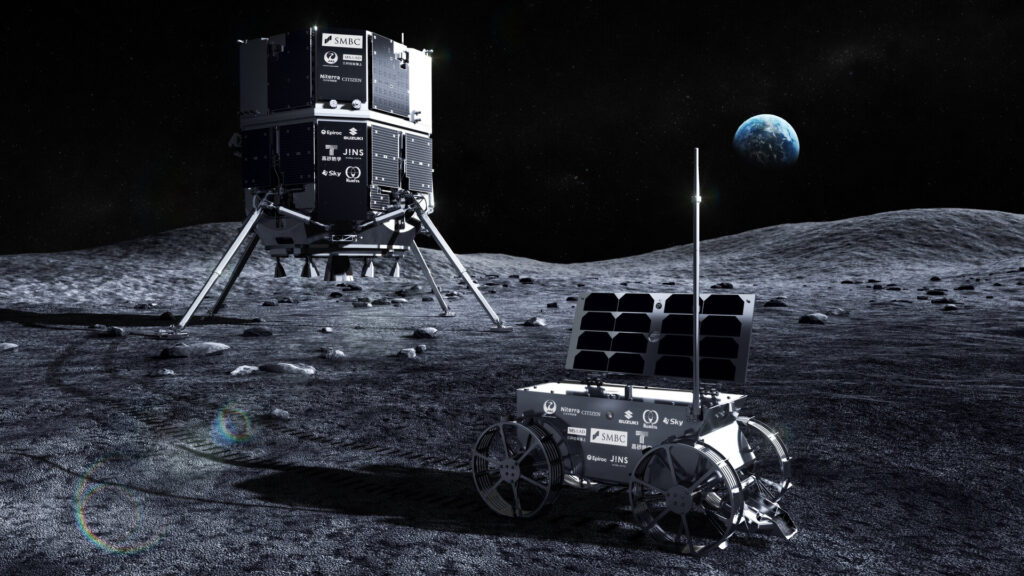
In an ambitious leap for lunar exploration, the European Space Agency (ESA) is supporting a groundbreaking mission set to land the first European-built rover on the Moon. The mission, led by Japanese company ispace, will attempt to land its RESILIENCE spacecraft on the Moon no earlier than June 5, 2025. This significant endeavor is facilitated by ESA’s global network of ground stations, which are crucial for maintaining communication between the spacecraft and ispace’s mission control.
The mission, dubbed “SMBC x HAKUTO-R Venture Moon,” represents the latest phase in ispace’s lunar exploration program. Launched aboard a SpaceX Falcon 9 rocket from Cape Canaveral Space Force Base on January 15, 2025, RESILIENCE is set to touch down on the Moon’s Mare Frigoris. From its Mission Control Center in Tokyo, ispace monitors the spacecraft’s health, position, velocity, and temperature, ensuring the mission’s success.
ESA’s Critical Role in Lunar Communication
ESA’s involvement is pivotal, with its network of satellite communication antennas providing the essential radio link to transmit and receive information across space. These antennas are remotely controlled from the European Space Operations Centre (ESOC) in Germany, underscoring ESA’s vital role in the mission’s success.
The Estrack network, which includes three 35-meter deep space antennas located in Spain, Argentina, and Australia, as well as a 15-meter antenna in French Guiana, is supporting the mission. Additionally, the Goonhilly Earth Station Ltd in the UK contributes significantly through the extended Estrack network.
The Estrack stations have been instrumental since the launch, supporting RESILIENCE throughout its journey into deep space and back on a low-energy lunar transfer orbit. As the spacecraft approaches the lunar surface, Estrack will continue to track it, providing crucial telemetry needed to confirm a successful landing.
The First European Rover on the Moon
Once landed, the RESILIENCE spacecraft will conduct experiments on the lunar surface for approximately two weeks, serving both commercial and institutional partners. During this phase, ESA and Goonhilly antennas will transmit commands and receive scientific data from the lander.
A significant highlight of the mission is the deployment of TENACIOUS, the first European-built lunar rover. Designed, manufactured, and assembled by ispace EUROPE S.A. in Luxembourg, the lightweight micro rover was co-funded by LuxIMPULSE, the Luxembourg National Space Programme. This initiative is managed by the Luxembourg Space Agency and implemented by ESA.
ispace Europe operates a lunar test yard, a clean room, and a control center in Luxembourg, which will be used to operate the rover during its lunar activities. In 2020, NASA awarded ispace Europe a contract to collect lunar regolith samples as part of the Artemis program, to which the rover’s activities will contribute.
Communication and Future Implications
Commands to TENACIOUS will be routed from ispace in Luxembourg to ESOC in Germany, then relayed through ESA’s antennas to the Moon’s surface. The ispace lander will receive these commands and forward them to the rover. Data from the rover, including images from its cameras, will travel back to Earth through the same communication chain.
According to ESA officials, this mission not only marks a significant milestone for European space exploration but also strengthens international collaboration in space endeavors. The deployment of TENACIOUS on the lunar surface is expected to yield valuable scientific data, advancing our understanding of the Moon and paving the way for future missions.
As the world watches this historic mission unfold, the success of RESILIENCE and TENACIOUS could inspire further European contributions to lunar exploration and beyond. The collaboration between ESA and ispace exemplifies the power of international partnerships in achieving extraordinary feats in space exploration.







